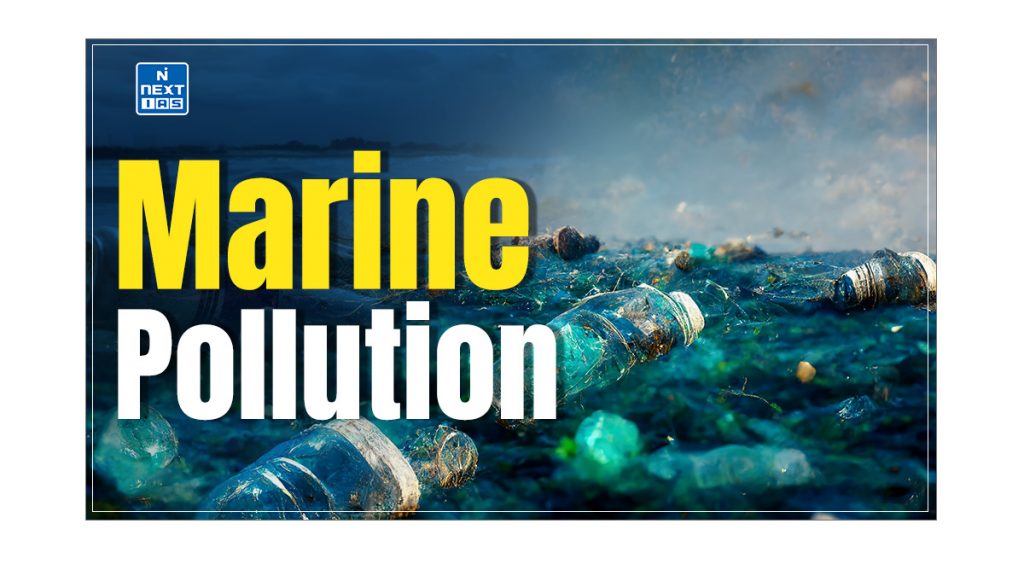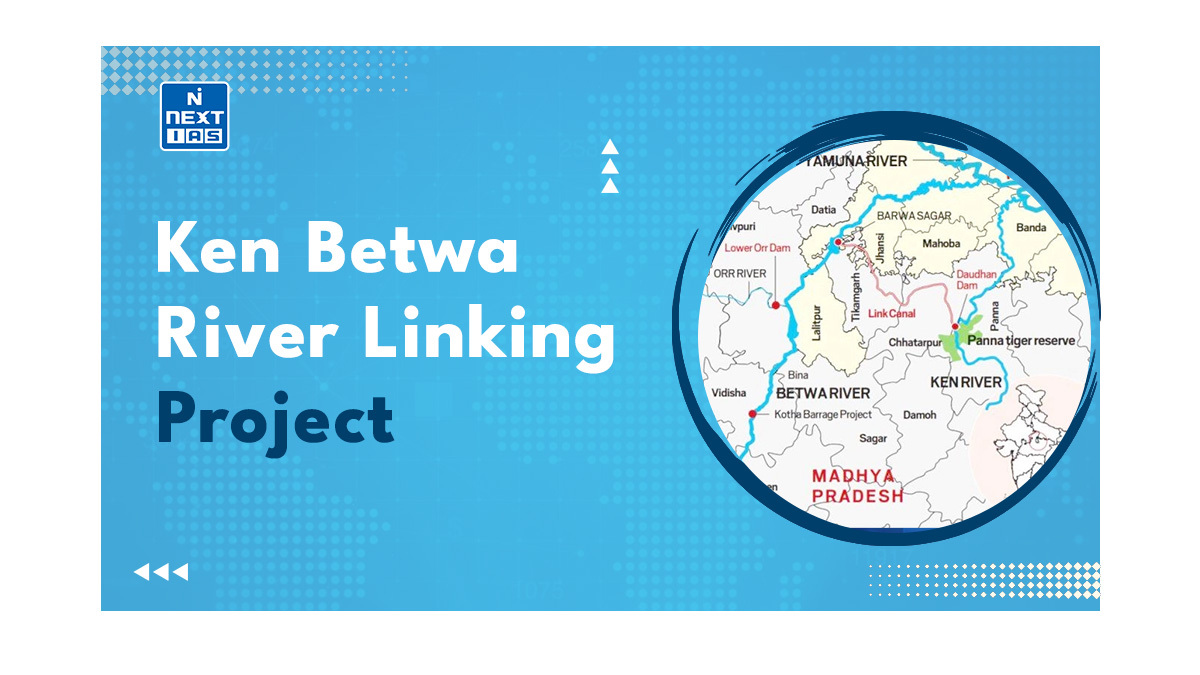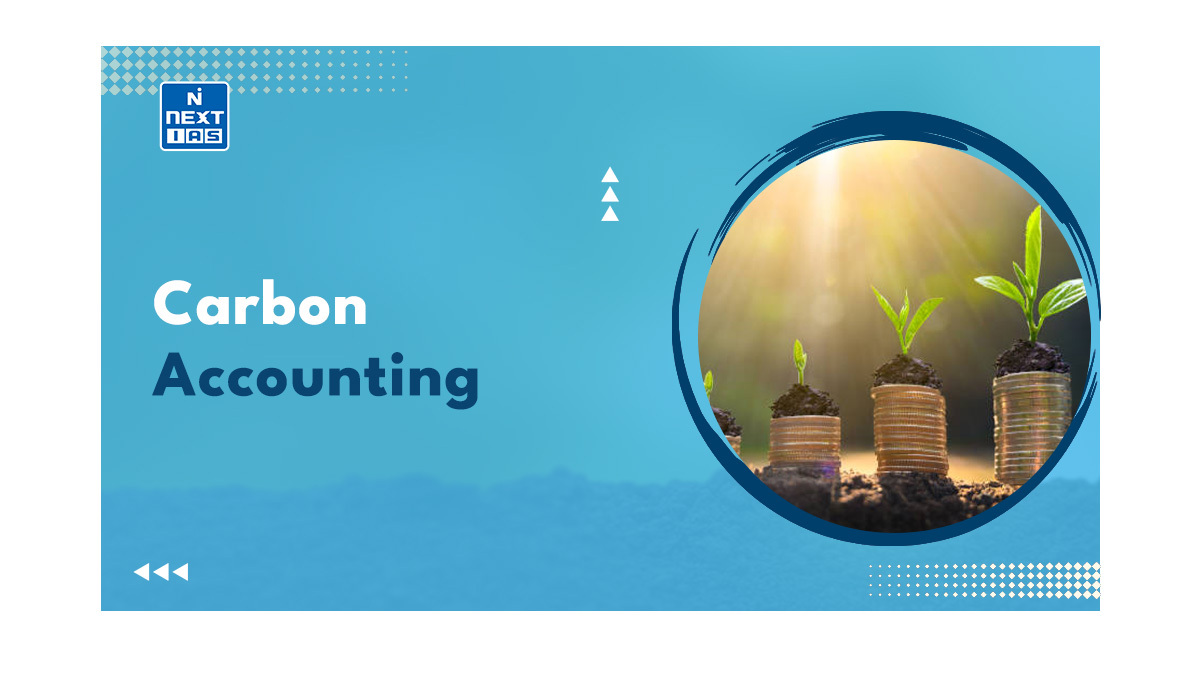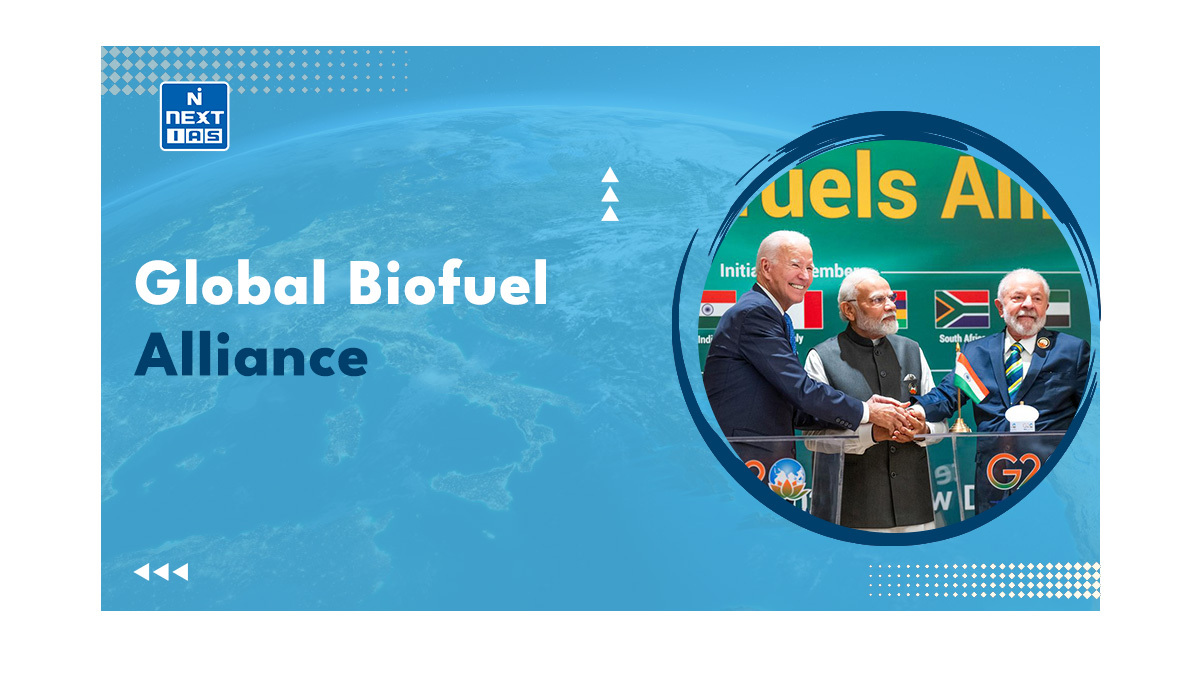
Increasing Marine Pollution has emerged as a significant threat to biodiversity, climate regulation, and the livelihoods of millions of people. As a critical environmental issue, it has far-reaching implications for both marine ecosystems and human life. This article aims to study in detail Marine Pollution, its meaning, major causes, sources, effects & consequences, control measures, and other related aspects.
What is Marine Pollution?
- Marine pollution can be defined as the introduction of substances directly or indirectly by humans into the marine environment, resulting in adverse effects such as hazards to human health, obstruction of marine activities, and lowering the quality of seawater.
- As human activities continue to expand and intensify, the pressures on our marine ecosystems are mounting.
- The enormous dumping of pollutants into the ocean adversely affects the marine environment and areas along the coasts, such as estuaries, reefs, wetlands, mangroves, etc.
- As a result, Marine Pollution has emerged as one of the prominent types of Environmental Pollution.
| What is Environmental Pollution? – Environmental Pollution refers to the introduction of harmful materials into the environment. – In other words, it is the contamination of the physical and biological components of the environment to such an extent that normal environmental processes are adversely affected. – Based on the nature of the pollutants and the media they affect, Environmental pollution can be categorised into several types, including Air Pollution, Soil Pollution, Water Pollution, etc. Read our detailed articles on Environmental Pollution, Soil Pollution, Water Pollution, Air Pollution, Noise Pollution, Nuclear Pollution, Thermal Pollution, and Plastic Pollution. |
Types of Marine Pollution
The types of marine pollution can be seen as follows:
- Marine pollution refers to the contamination of oceans and seas by harmful substances and activities.
- Oil spills are one of the most visible types, causing catastrophic damage to marine life and ecosystems.
- Plastic pollution is another growing concern, with large amounts of plastic waste entering oceans, affecting marine animals and seabirds.
- Chemical pollution, including fertilisers, pesticides, and heavy metals from industrial runoff, leads to toxic environments and dead zones where marine life struggles to survive.
- Sewage and waste disposal contribute to nutrient loading, causing harmful algal blooms and oxygen depletion.
- Additionally, noise pollution from shipping, sonar, and drilling affects marine species’ communication and navigation, while thermal pollution from industrial plants disrupts marine ecosystems by altering water temperatures.
Sources of Marine Pollution
Major sources of marine pollution can be seen as follows:

- Waste and sewage from various sources, such as industries, residences, etc., are discharged directly into the sea causing marine pollution.
- Organic waste is a major cause of marine pollution, as its disposal poses a challenge.
- Pesticides and fertilisers from agricultural activities are washed off by rain, which finally drains into the sea.
- Oil spillages & ship accidents lead to heavy metals and other contaminants being dumped in the sea.
- Offshore oil exploration and extraction also pollute seawater to a large extent.
Causes of Marine Pollution
Various sources, including land-based activities, maritime activities, and atmospheric deposition, can cause marine pollution. Common causes of marine pollution include:
- Land-based sources: Runoff from agriculture, industry, and urban areas can carry pollutants such as pesticides, fertilizers, heavy metals, and sewage into rivers and streams, which ultimately flow into the ocean.
- Maritime activities: Shipping, fishing, and offshore oil and gas operations can release pollutants such as oil spills, ship waste, and debris into the ocean.
- Atmospheric Deposition: Air pollution can travel long distances and eventually be deposited into the ocean, contributing to marine pollution. This includes marine pollutants such as acid rain, heavy metals, and plastic microparticles.
Marine Pollution Due to Organic Wastes
- Organic waste is a biodegradable material that includes plant-based or animal-based products.
- Marine Pollution is usually broken down by other organisms over time, and disposing of it poses one of the biggest environmental challenges.
- Some of the prominent impacts of disposal of organic wastes into the marine environment include:
- It affects the flora and fauna of the marine environment
- Directly or indirectly, it impacts the oxygen concentration thus affecting the quality of the water. Breaking down of waste by bacterial activity leads to reduction in oxygen concentration.
- It also leads to end products such as Hydrogen sulphide and ammonia, which are toxic to many organisms.
- Low oxygen leads to the formation of an anoxic zone from which most life disappears except for anaerobic bacteria, fungi, yeast and some protozoa, and renders the water foul-smelling.
Oil Spills and Marine Pollution
- Oil Spills remain one of the prominent sources of marine pollution.
- An oil spill is a type of pollution that involves fast and mass-scale oil coming in contact with open water.
- In this type of marine pollution, liquid petroleum oil is released into the environment, mainly marine areas, due to human activity.
- Oil spills may happen from releasing crude oil from tankers, offshore platforms, drilling rigs and wells, and petroleum products from the petroleum refinery.
- Spills may take weeks, months or even years to clean up.
- Being insoluble, oil quickly comes up to the surface and does not directly affect the underwater, but it has hazardous effects on flora/fauna in the long term.
Impact of Oil Spills
- Impact on Marine Animals: Due to poisonous chemical composition of oil, it leads to the mortality of sea animals/birds.
- Oil Spills destroy the breeding ground and habitat of many fishes, animals, and migratory birds.
- Similarly, drill cuttings dumped on the seabed create anoxic conditions and produce toxic sulphides in the bottom sediment, eliminating the benthic fauna.
- Impact on Coral Reefs: Tar and other toxic chemicals leached from the oil and some of the oil itself sink to the seabed, damaging coral reefs and endangering the marine life depending on them.
- Impact on Birds: Many birds die due to drowning or inability to eat due to oil sticking to their body.
- Impact on People: Phytoplankton and zooplankton from vast distance absorb and digest oil, which accumulates in them.
- As a result, harmful chemicals enter the food chain of the marine world and then move to the human food chain, having permanent effects in the long term.
- It also impacts the livelihood of people in coastal areas.
- Reduction of Oxygen: Oil being lighter than water forms thin film thereby covering vast area of water bodies and blocking oxygen, sunlight exchange hence leading to death of underwater lives.
- Tourism: Due to increasing oil pollution on beaches and shorelines, recreational activities like boating, swimming, diving, and adventure sports are taking a back seat.
- Impact on Fishing Business: Phytoplankton blooms or ‘red tides’ lead to discolouration as a result of large amounts of organic waste.
- This also leads to a reduction in biological oxygen for other marine flora and fauna, impacting the commercially important marine species and thus reducing the market value of sea food.

Legal Framework in India for Tackling Oil Spills
- In India, there is no law covering oil spills as such and their consequential environmental damage.
- They are covered as accidental discharge as defined in the Environment Protection Act (EPA) of 1986.
- However, India has the “National Oil Spill Disaster Contingency Plan of 1996 (NOS-DCP)” to tackle such exigencies.
- One of the most important provisions of this contingency plan is to mandate all major ports in India should have basic, minimum equipment, like inflatable booms and oil skimmers, to tackle oil spills.
- It was revised in 2015 to meet international standards.
Control Measures for Oil Spill Disasters
- Chemical Methods: The oil spills can be cleaned up by chemical methods.
- Using sorbents (big sponges which absorb oil) oil spills can be cleaned. It breaks down oil into its Corresponding chemical constituents.
- Biological Methods: Cleaning of crude oil spills and treatment of oily sludge can be done by bio remedial methods.
- ONGC TERI Biotech has developed a technology called Oil zapper, a cocktail of different bacteria that feed on oil.
- Physical Methods: Physical methods like manpower, vacuum trucks, and machines can be used to suck up spilt oil from the beaches and the surface of the water.
- Shovels and road machinery can be used to clean up oil on the beach.
- Floating barriers called ‘booms’ can also be used to prevent oil pollution. Already contaminated sand and gravel can be removed so that they don’t get mixed with ocean waters.
- Skimming: As the name suggests, skimming involves the removal of oil spillage with the help of tools and equipment from the surface of the water.
- The most important aspect to be noted that only lighter oils can be separated and removed from the water in this method of cleaning up oil spills.
- Regulatory Measures: The fitness of ships and oil tankers in marine waters should be properly maintained.
- Their mechanical parts and equipment need to pass strict quality checks to be proven safe against any oil spill hazards.
- Leakages should be fixed before they find a route to the sea.
Standard Criteria for Marine Pollution
The standard criteria for marine pollution are as follows:
Biochemical Oxygen Demand (BOD)
- Biochemical oxygen demand (BOD) is the amount of the quantity of oxygen needed by aerobic biological organisms (e.g., aerobic bacteria) in a body of water to break down organic material.
- The BOD value is most commonly expressed in milligrams of oxygen consumed per litre of sample water during five days of incubation at 20°C.
- It is often used as a robust surrogate to determine the degree of organic pollution in water.
- Micro-organisms involved in biodegradation of organic matter in sewage waste consume lot of oxygen, increasing the BOD, which makes water oxygen deficient, killing fish and other aquatic creatures.

Chemical Oxygen Demand (COD)
- Chemical Oxygen Demand (COD) is a measurement of the oxygen required to oxidise soluble and particulate organic matter in water.
- Chemical Oxygen Demand is an important water quality parameter because, similar to BOD, it provides an index to assess the effect discharged wastewater will have on the receiving environment.
- Higher COD levels mean a greater amount of oxidisable organic material in the sample, which will reduce dissolved oxygen (DO) levels.
- A reduction in DO can lead to anaerobic conditions, which is deleterious to higher aquatic life forms.
- The COD test is often used as an alternative to BOD due to the shorter length of testing time.
Biological Magnification
- Biological magnification refers to the tendency of pollutants to concentrate as they move from one trophic level to the next.
- In order for biomagnification to occur, the pollutant must be: long-lived, mobile, soluble in fats, biologically active. E.g. DDT
- If the pollutant is soluble in water, it will be excreted by the organism. However, Pollutants that dissolve in fats may be retained for a long time.

Eutrophication
- Generally, nutrients like nitrates and phosphates are common pollutants generated by residential areas and agricultural run-off.
- They are usually associated with human and animal wastes or fertiliser that have been washed into surface water bodies by rain.
- Nitrates and phosphates are plant nutrients, so they stimulate plant growth.
- Thus, if present in large quantities, they can encourage excessive plant growth in the water, causing the phenomenon known as an algal bloom, which means a sudden increase in the population of microscopic algae.
- There may also be an increase in larger plants such as the invasive water hyacinth.
- When the increased population of aquatic plants dies, the decay of the organic plant material by bacteria can cause deoxygenation of the water, resulting in the death of other organisms such as fish.
- If a water body has high nutrient levels it is said to be eutrophic and the process is known as eutrophication.

Dead Zones
- Dead zones are low-oxygen or hypoxic areas in the world’s oceans and lakes. Because most organisms need oxygen to live, few organisms can survive in hypoxic conditions.
- That is why these areas are called dead zones.
Occurrence of Dead Zones
- Dead zones can be caused by natural and anthropogenic factors.
- Natural causes include coastal upwelling and changes in wind and water circulation patterns.
- The use of chemical fertilisers is considered the major human-related cause of dead zones around the world.
- Runoff from sewage, urban land use, and fertilisers can also contribute to eutrophication.
- They can be caused by an increase in nutrients (particularly nitrogen and phosphorus) in the water, known as eutrophication.
- These chemicals are the fundamental building blocks of single-celled, plant-like organisms that live in the water column and whose growth is limited in part by the availability of these materials.
- Eutrophication can lead to rapid increases in the density of certain types of these phytoplankton, a phenomenon known as an algal bloom.
Hypoxia
- Hypoxia refers to a condition when tissues and cells do not get enough oxygen to function correctly.
- The bacterial degradation of their biomass consumes the oxygen in the water, thereby creating a state of hypoxia.
Consequences of Marine Pollution
The consequences of marine pollution are as follows:
- Pollutants adversely affect the productive ocean regions, thus causing huge losses to fish populations and coral reefs.
- This results in economic losses amounting to billions of dollars per year.
- The influx of organic pollutants results in eutrophication or the formation of red tides.
- These are blooms (massive growth) of red algae, which inhibit the movement of ships and also kill marine fauna.
- The dumping of huge amounts of toxic wastes in a short duration of time creates areas of oxygen-depleted zones in the coastal waters.
- In these zones, most of the aquatic lives die or migrate elsewhere.
- Discarded garbage, sewage, plastic refuse, etc. that are dumped in the oceans sometimes accumulate on the beaches.
- This spoils the aesthetic beauty of the region and often results in decreased tourist footfall.
- Oil spills often result in both immediate and long-term environmental damage.
- Some of the environmental damage caused by an oil spill can last for decades after the spill occurs.
Marine Pollution Control Measures
The marine pollution control measures can be seen as follows:
- Improvement of the purifying performance of wastewater treatment plants, installing tertiary treatment systems to reduce nutrient concentrations;
- Implementation of effective filter ecosystems to remove nitrogen and phosphorus present in the run-off water (such as phyto-purification plants);
- Reduction of phosphorous in detergents;
- Rationalisation of agricultural techniques through proper planning of fertilisation and use of slow-release fertilisers;
- Alternative practices in animal husbandry should be used to limit the production of wastewater.
- Oxygenation of water to restore the ecological conditions, reducing the negative effects of the eutrophic process, such as scarcity of oxygen and formation of toxic compounds deriving from the anaerobic metabolism;
- Chemical precipitation of phosphorous by the addition of iron or aluminium salts or calcium carbonate to the water, which gives rise to the precipitation of the respective iron, aluminium or calcium orthophosphates, thereby reducing the negative effects related to the excessive presence of phosphorus in the sediments.
Conclusion
Marine Pollution is a growing threat that requires urgent and coordinated action to safeguard oceanic ecosystems and human well-being. The preservation of our oceans is not only essential for environmental sustainability but also for the economic and social health of communities worldwide. As the world works towards achieving sustainable development, addressing marine pollution must remain a priority to ensure the health and vitality of our planet’s oceans for future generations.
Frequently Asked Questions (FAQs)
What is meant by marine pollution?
Marine pollution refers to the introduction of harmful substances or energy into the ocean, which negatively impacts marine ecosystems, biodiversity, and human health.
What are the effects of marine pollution?
Marine pollution affects marine life, degrades water quality, disrupts food chains, leads to habitat destruction, and poses risks to human health through contaminated seafood.
What are the effects of marine pollution?
The effects of marine pollution are as follows:
– Harm to marine life through ingestion or entanglement in plastic waste.
– Disruption of ecosystems due to chemical pollutants like oil spills and pesticides.
– Damage to coral reefs from pollutants and increased ocean acidity.
How to prevent pollution in the ocean?
Preventing marine or ocean pollution involves reducing plastic use, treating sewage before discharge, regulating industrial waste, promoting sustainable fishing, and implementing stricter sea waste disposal laws.






